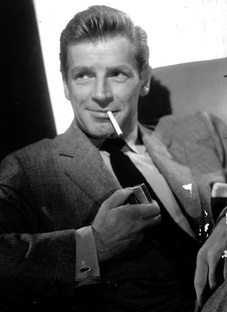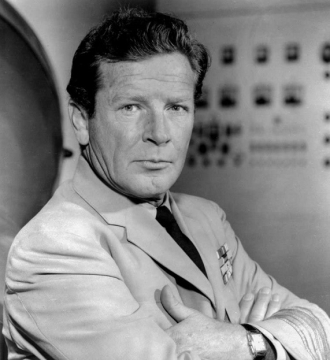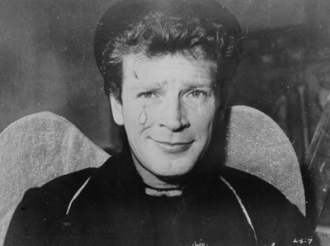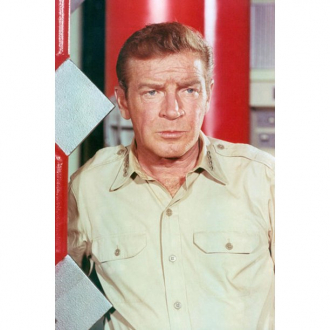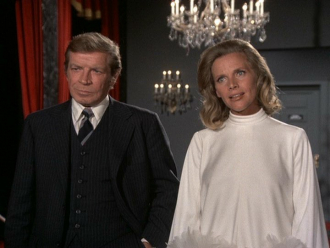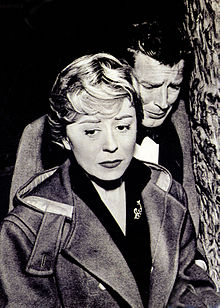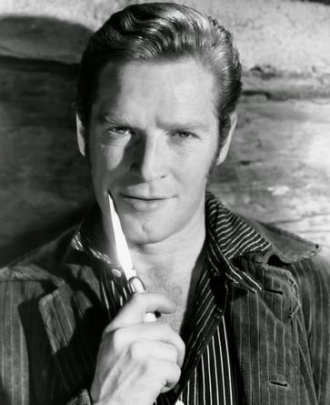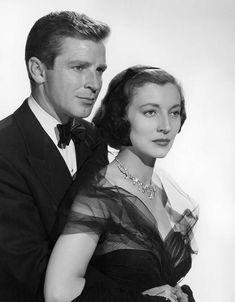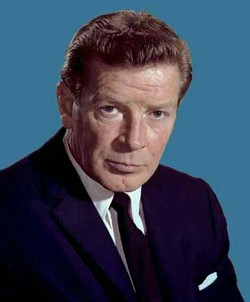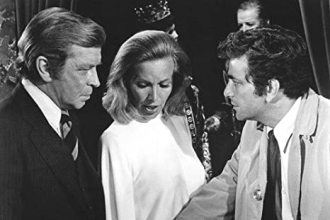Richard Basehart
Born August 31, 1914 in Zanesville, Ohio, USA
Died September 17, 1984 in Los Angeles, California, USA (multiple strokes)
Birth Name John Richard Basehart
Height 5' 9" (1.75 m)
Mini Bio (1)
Despite many a powerful performance, this actor's actor never quite achieved the stardom he deserved. Ultimately, Richard Basehart became best-known to television audiences as Admiral Harriman Nelson, commander of the glass-nosed nuclear submarine 'S.S.R.N Seaview' in Irwin Allen's Voyage to the Bottom of the Sea (1964), shown on ABC from 1964 to 1968. Basehart's distinctively deep, resonant voice also provided narrations in feature films, TV mini-series and for documentaries.
Born in Zanesville, Ohio, on August 14 1914, Basehart was one of four siblings born to a struggling and soon-to-be widowed editor of a local newspaper. Upon leaving college, he worked briefly as a radio announcer and then attempted to follow in his father's journalistic footsteps as a reporter. Controversy over one of his stories led to his departure from the paper and cleared the path to pursue acting as a career. In 1932, Basehart made his theatrical bow with the Wright Players Stock Company in his home town and subsequently spent five years playing varied and interesting roles at the Hedgerow Theatre in Philadelphia. From 1938, he began to work in New York on and off-Broadway. Seven years later he received the New York Drama Critics Circle Best Newcomer Award for "The Hasty Heart", a drama by John Patrick, in which Basehart played a dying Scottish soldier. In 1945, he received his first film offers. When he heard director Bretaigne Windust was seeking an authentic Scot for the lead role in The Hasty Heart, Basehart not only effected an authentic enough burr to win the part, but won also the 1945 New York Critic's Award as the most promising actor of the year. His accent was so good that a visiting leader of a Scottish clan told the actor he knew his clan.
Basehart made his debut on the big screen with Repeat Performance (1947) at Eagle-Lion, a minor film noir with Joan Leslie, followed at Warner Brothers with the Gothic Barbara Stanwyck thriller Cry Wolf (1947). His third picture finally got him critical plaudits for playing a sociopathic killer, relentlessly hunted through drainage tunnels in He Walked by Night (1948), a procedural police drama shot in a semi-documentary style. Variety gave a positive review, commenting "With this role, Basehart establishes himself as one of Hollywood's most talented finds in recent years. He heavily overshadows the rest of the cast..."
It was the first of many charismatic performances in which Basehart would excel at tormented or introverted characters, portraying angst, foreboding or mental anguish. His gallery of characters came to include the notorious Robespierre, chief architect of the Reign of Terror (1949), set during the French Revolution. He was one of the feuding Hatfields in Roseanna McCoy (1949) and in Fourteen Hours (1951) (based on a real 1938 Manhattan suicide) had a tour de force turn as a man perched on the high ledge of an office building threatening to jump. For much of the film's duration, the camera was firmly focused on the actor's face. Basehart later recalled "It was an actor's dream, in which I hogged the camera lens, and the role called on me to act mostly with my eyes, lips and face muscles". The New York Times reviewer Bosley Crowther called his performance 'startling and poignant'.
Eschewing conventional movie stardom, Basehart meticulously selected and varied his roles, avoiding, as he put it, "stereotyping at the expense of not amassing an impressive bank account.'' In the wake of the sudden death of his first wife, Basehart left the U.S. for Italy. In March 1951, he got married a second time (to the actress Valentina Cortese) and appeared in a succession of European movies, playing the ill-fated clown Il Matto in Federico Fellini's classic La Strada (1954); against type, essayed a swashbuckling nobleman reclaiming his titles and estate in Cartouche (1955), and (again for Fellini), played a member of a gang of grifters in Il Bidone (1955). He was also ideally cast as the mild-mannered Ishmael in John Huston's excellent version of Moby Dick (1956) and as Ivan, one of The Brothers Karamazov (1958).
Basehart had played Ishmael.
In the television version of The Paradine Case (1962), Basehart played the same role that Gregory Peck had played in the film version. Peck and Basehart had both appeared in the film Moby Dick (1956).
He and his wife Diana were the founders of the organization, Actors and Others for Animals, in 1971. They had been driving on a freeway and were appalled when someone threw a dog onto the freeway from a vehicle in front of them. It was too late for that animal, but they vowed to make things different in the future for others.
Was understandably distraught, when his second wife, Italian actress Valentina Cortese, left him and moved back to Italy with their young son, Jackie Basehart. Close friend Warren Stevens, concerned for Basehart's well-being, got him an apartment adjoining his own. For months, Basehart had a standing phone call in to Italy, but Valentina never answered it. When Basehart finally filed for divorce, Stevens was on hand to serve as his witness.
During the filming of Fourteen Hours (1951), Basehart's wife Stephanie was taken ill with what proved to be a brain tumor, and died very suddenly. Devastated, he finished work on the film. He started a new film, The House on Telegraph Hill (1951) in San Francisco where he met Valentina Cortese, who was to become his next wife.
On asking Federico Fellini as to why Fellini wanted him for the role of the Fool in La Strada (1954), Fellini answered: "Because if you did what you did in Fourteen Hours (1951), you can do anything.".
When he heard that that director Bretaigne Windust wanted an authentic Scotsman for the lead role in the Broadway production "The Hasty Heart", Basehart managed to effect a very convincing burr and won the part. For his portrayal of Cpl. MacLachlan, Basehart also went on to win the 1945 New York Critic's Award as the most promising actor of the year.
Basehart's last work as an actor was doing the voice-over for the closing ceremonies of the 1984 Los Angeles Olympics. The day after finishing the recording he suffered the first of a series of strokes, the last of which proved fatal.
Best remembered by the public for his starring role as Admiral Nelson in Voyage to the Bottom of the Sea (1964).
Father, with Diana Lotery, of makeup artist Gayla Basehart.
Father, with Valentina Cortese, of son Jackie Basehart.
Died one week before Walter Pidgeon, and from the same medical malady - stroke. Pidgeon originated the role of Admiral Harriman Nelson in Irwin Allen's 1961 movie, Voyage to the Bottom of the Sea (1961), the role that Basehart famously went on to play in Allen's 1964 television series of the same name, Voyage to the Bottom of the Sea (1964).
He, along with the cast of Voyage to the Bottom of the Sea (1964) was featured in Mad magazine (March1966 - Number 101) in a parody entitled "Voyage to See What's on the Bottom".
Personal Quotes (3)
Nothing irritates me more than actors who take all the money and then complain about how terribly limited TV is. That kind of talk only reflects on them.
I couldn't be a straight leading man. You've got to be bigger and prettier than I am.
[asked how "Hamlet" compared with Voyage to the Bottom of the Sea (1964)] With [William Shakespeare] there's more character than an actor can ever plumb. But there's no greater challenge than making something out of nothing.
Salary (2)
The House on Telegraph Hill (1951) $1,750 a week
Inquest Into a Bleeding Heart (1963) $10,000
See also

